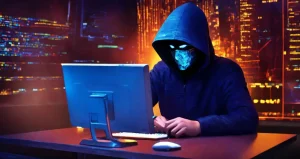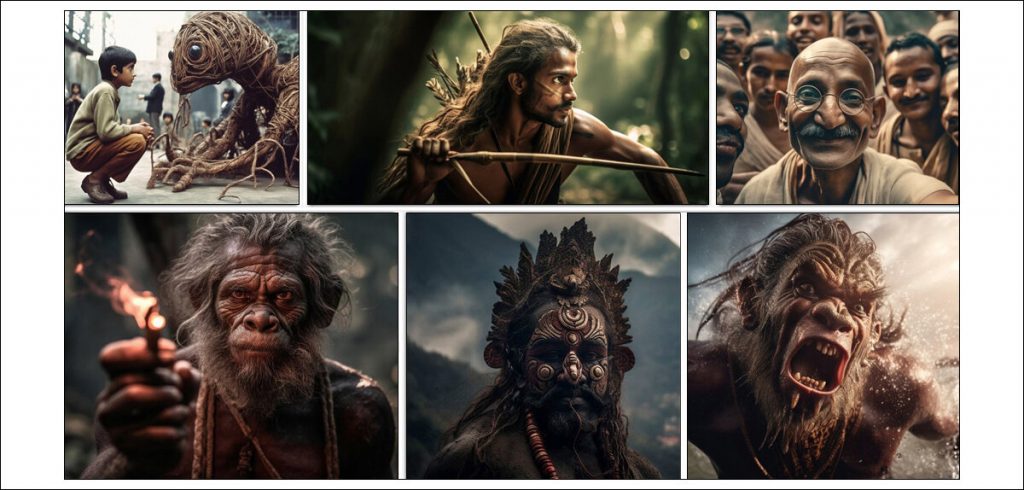The internet is fast cramping up with art, content, literature, music etc. created by AI while the world is gradually filling up with gene-edited living things says Satyen K. Bordoloi.
Geiger counters that measure radioactivity have a specific problem. They need iron smelted before 1945 i.e. before the first nuclear tests. Iron made since are polluted by the planet’s air rife with not much, but enough radioactivity for them not to give accurate radioactivity results.
Like 1945, the 2020s have been a cut-off for almost everything else: from art and literature to culture, politics, history and even the genetic pool of the planet. Nothing created since the 2020s – especially 2022 – can be called pure enough to have been created unencumbered by technologies around, especially Artificial Intelligence. As genetic editing – thanks to CRISPR – goes mainstream, we are reaching a similar point of no return regarding the gene pool of the planet as well.

Look at the three sunflower paintings. One of them is Van Gogh’s masterpiece worth millions. The other two are 5-second creations in OpenAI’s Dall-E. Can you tell me which one is by Van Gogh? Why not look at the following stanzas of two different sonnets: only one written by Shakespeare? Can you guess which?
We chase this thing, this phantom of the heart,
And though it brings us pain and endless strife,
We cannot help but play this foolish part,
For love is still the sweetest thing in life.
From fairest creatures we desire increase,
That thereby beauty’s rose might never die,
But as the riper should by time decrease,
His tender heir might bear his memory.
What forgers take a lifetime to do, AI can do in seconds. The result is the internet getting overcrowded with images, texts and increasingly even videos (even porn has not been left ‘untouched’) – created by artificial intelligence – each of such high quality that you can’t tell the difference. Old black and white images are being restored and coloured, rendering them strikingly different from the original – like they are recent and alive, not an ancient memory.
It is thus getting impossible by the day to tell the ‘real’, ‘original’ or ‘pure’ from the ‘copy’, ‘fake’ or ‘imitation’; the human created from the AI-generated. Humanity should take a backup of the entire world wide web as it existed before 2022 because all you saw till then: from stupid website content to high literature in The Paris Review, from works created by the greatest photographers to our inane selfies – were created by humans. Post 2022 we can never be sure.
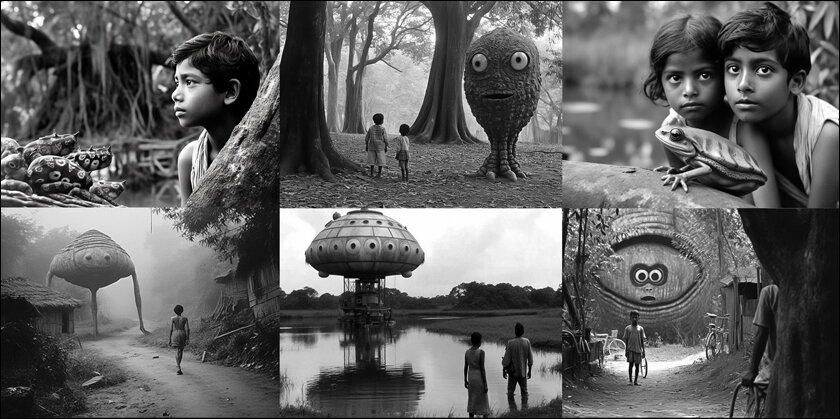
Everything is up for revision, for ‘improvement’. We may not be able to time-travel, but by recreating everything in the past using AI, we are getting as close as we can to the idea. You can now see the streets of New York from 1895 in all their resplendent colours, as if the photo or video was shot yesterday on a hyperrealistic film set. Many are using MidJourney and Dall-E to input descriptions from ancient texts to recreate the people or places from those times. You no longer need to imagine what the characters from Ramayana look like, or how a Gandhi selfie would look.
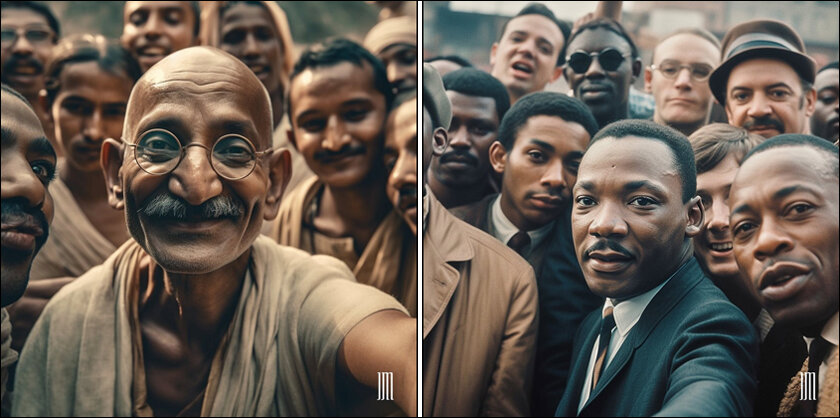
This changes everything, not just how you and I see ourselves and our past, OUR MYTHS, but also how the next generation will see them. The post-AI generation whom I call Art.Ilennials – born after 2010 who will come to their impressionable teens during the full onslaught of generative AI like ChatGPT – will have a different consciousness than us because of all the new inputs. We know the past as grainy, black-and-white photos or sketches, or text descriptions. The Art.Ilennials will see them in high resolution.
The age of innocence and purity as we know it, is gone. In its place, we are in a hyperreal age where even the dead await the prompt thrown into AI for their resurrection, their Easter Sunday.
CRISPR and Gene Pollution
What AI is doing to human creativity, humans – using CRISPR – are doing to nature’s creativity, albeit at a much slower pace. And with possible dangerous repercussions. CRISPR has enabled humans to snip out and edit DNA from living organisms. Thus, even DNA – that nature took millions of years to perfect, is at the mercy of the pollution of human interference.
The result is that even the pristine DNA of life on the planet – from humans and animals to plants, insects and microorganisms – could be altered beyond recognition. Every change humans make on this will have rippling repercussions on the future of life on this planet. And while the changes, the ‘pollution’ caused by AI in the cultural and artistic sphere is transformative, this could be dangerous.
Interestingly the gene-editing revolution also began at the turn of this millennium, alongside the digital explosion. This has reached such levels that a futuristic, sci-fi film made barely 25 years ago – Gattaca – has come to reality almost entirely today.
A different take on ‘Pollution’ and ‘Purity’
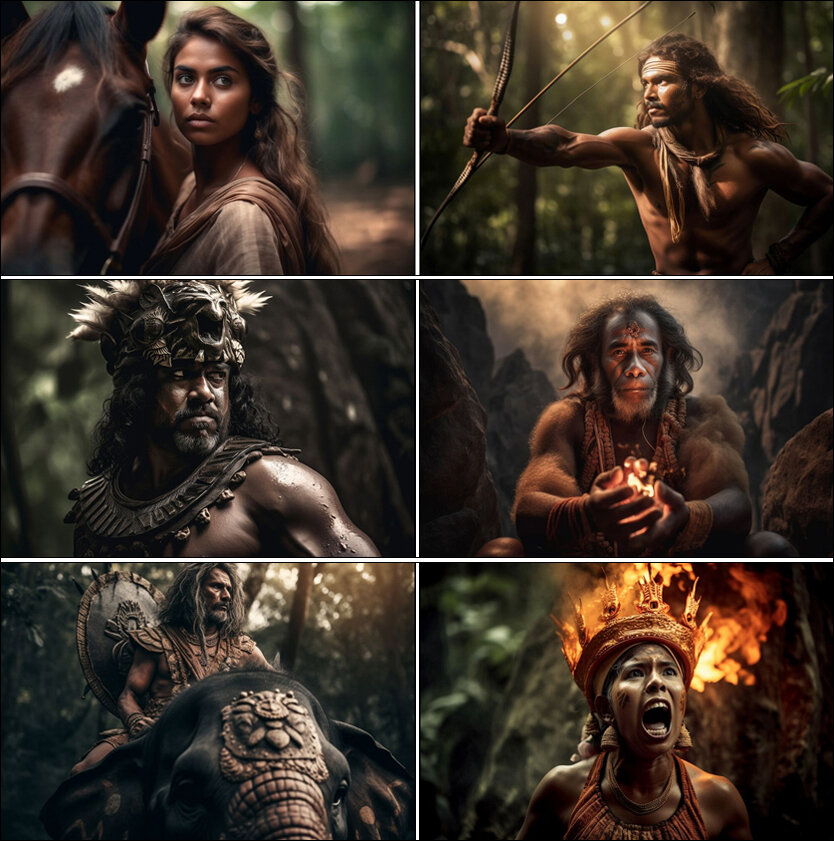
But then is all that AI doing, really pollution? Isn’t human creativity and artistry the same thing: the ability to hold data and ideas inside our conscious and subconscious minds and let them out through what we create. Who decides what is art and what is not, what is creative and what is not? Isn’t creativity the ability to see connections in seemingly disconnected things, in seeing patterns where none seemed to exist?
So, is what AI doing, really pollution or just the next level of everything: from art and creativity to culture, society and history? The transformation is rapid, leading us to a singularity where everything everywhere will exist all at once – not like parallel dimensions in the homonymous film, but in a sense that the stories of all ages and times will be available to us in rich detail thanks to AI that will scoop up larger narratives from scraps that are currently available in ancient texts and create visuals for us. Think of it like a palaeontologist creating how a dinosaur looks from a few broken dozen bones and excavated fragments.
Is not the age of pollution also an age of liberation? Rules that were carefully guarded by pundits sometimes out of thin air – have no option but to be abandoned. We are amid AI-induced creativity that needs humans to make sense of what we make and what AI is doing.
New forms of creativity, of art and business, of doing things, of looking at history and the future are emerging thanks to the infusion of technology. And all these newnesses will need humans. Because we forget that no matter how hyperintelligent AI gets, it has neither context nor meaning of its own. The only ones that do, are those that are living with the human race at the pinnacle of it.
The best place to find iron smelted before 1945 are shipwrecks. Those metal scraps sitting on ocean floors are thus priceless. Searching for purity in scraps is a perfect analogy for our times. But then purity was always a problematic notion everywhere: in art, culture, religion and eugenics. That it is coming to an end in such a spectacular fashion, is something to be cherished, rather than lamented.
(In case you are still wondering, it is the second sonnet-stanza that was written by Shakespeare, the first by ChatGPT while the leftmost image of the three is the Van Gogh masterpiece.)
In case you missed:
- How Old Are We: Shocking New Finding Upends History of Our Species
- Copy Of A Copy: Content Generated By AI, Threat To AI Itself
- What are Text-to-Video Models in AI and How They are Changing the World
- A Howl Heard Worldwide: Scientific Debate Roars Over an Extinct Wolf’s Return
- How Lionsgate-Runway Deal Will Transform Both Cinema & AI
- Hey Marvel, Just Admit You’re Using AI – We All Are!
- Susan Wojcicki: The Screaming Legacy of The Quiet Architect of the Digital Age
- Rise of the Robolympics: When R2-D2 Meets Rocky Balboa
- The Rise of Personal AI Assistants: Jarvis to ‘Agent Smith’
- One Year of No-camera Filmmaking: How AI Rewrote Rules of Cinema Forever
